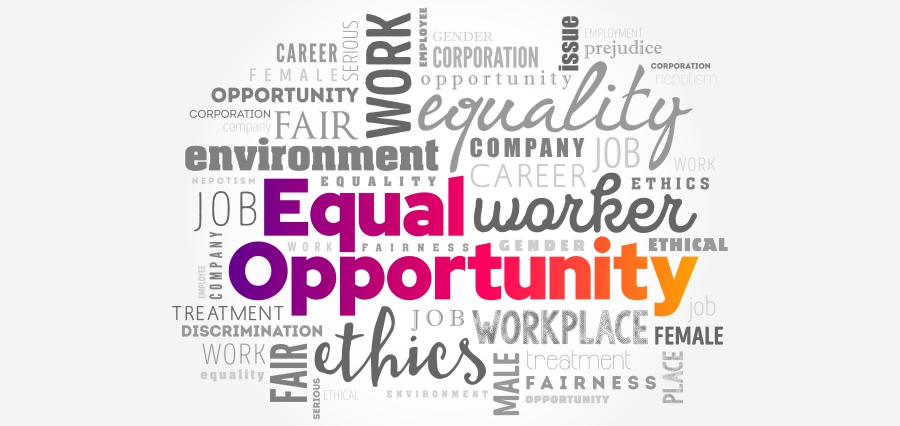Her Story
The narrative of the modern workplace is undergoing a transformation, with gender equality taking center stage. From boardrooms to startups, a wave of change is empowering women and dismantling long-held biases.
In the pursuit of gender equality, workplaces around the world are undergoing significant transformations. From diversity initiatives to inclusive policies, organizations are increasingly recognizing the importance of creating environments where all individuals, regardless of gender, have equal opportunities to thrive. Here are the top ten trends shaping gender equal workplaces today:
Shattering the Glass Ceiling: The rise of women in leadership positions is undeniable. From CEOs like Mary Barra (GM) and Indra Nooyi (former PepsiCo) to venture capitalists like Anne Wojcicki (23andMe), women are breaking barriers and proving their mettle. This shift is not just symbolic; it paves the way for future generations of women to aspire to leadership roles. Organizations are investing in leadership development programs tailored specifically for women. These programs provide mentorship, networking opportunities, and skill-building workshops to help women advance into leadership roles and break through the glass ceiling.
Embracing Flexible Work: Gone are the days of rigid, inflexible work models. Organizations are recognizing the diverse needs of their employees, offering options like remote work, flexible hours, and childcare support. This fosters a work-life balance that benefits everyone, especially women often burdened with disproportionate caregiving responsibilities. The COVID-19 pandemic accelerated the adoption of flexible work arrangements, including remote work and flexible hours. This trend has continued as organizations recognize the benefits of allowing employees to balance work and personal responsibilities, particularly for women who often shoulder caregiving duties.
Combating Unconscious Bias: Unconscious biases, ingrained societal beliefs, can subtly hinder women’s progress. Organizations are tackling this issue through awareness training, mentoring programs, and diverse interview panels, ensuring a level playing field and fair evaluation of talent. Unconscious bias training raises awareness of implicit biases that may influence decision-making processes, including hiring, promotion, and performance evaluations. By addressing bias at all levels of the organization, companies can create fairer and more equitable workplaces.
Pay Transparency and Equity: Closing the gender pay gap remains a top priority for organizations committed to gender equality. Companies are conducting regular pay audits, implementing transparent salary structures, and advocating for equal pay for equal work to ensure that women are compensated fairly for their contributions. The gender pay gap persists, but transparency is key to addressing it. Initiatives like salary audits and open discussions about compensation are crucial steps towards ensuring equal pay for equal work.
Investing in STEM and Entrepreneurship: Encouraging girls and young women to pursue careers in science, technology, engineering, and mathematics (STEM) fields and supporting women-led businesses are critical for long-term gender equality. Initiatives like coding bootcamps and mentorship programs are paving the way for an inclusive future.
Prioritizing Health and Well-being: Organizations are recognizing the link between employee well-being and productivity. This translates into providing comprehensive healthcare benefits, mental health support, and resources for managing stress, especially important for women navigating demanding careers and personal lives.
Celebrating Diversity, Equity, and Inclusion (DEI) Initiatives: DEI initiatives are becoming integral to organizational culture, with a focus on creating diverse and inclusive workplaces where all individuals feel valued and respected. From diversity training to affinity groups, companies are taking proactive steps to foster belonging and combat bias. Diversity and inclusion initiatives go beyond gender, encompassing race, ethnicity, sexual orientation, and other identities. Creating a work environment that celebrates diverse perspectives and experiences enriches the whole organization and fosters innovation.
Leveraging Technology and Data: Technology can be a powerful tool for promoting gender equality. Using data to analyze hiring practices, assess pay equity, and track progress on diversity goals helps organizations identify and address biases, ensuring data-driven decision making. Mentorship and sponsorship programs are essential for supporting the career advancement of women. These programs pair experienced leaders with rising female talent, providing guidance, advocacy, and opportunities for professional growth.
Amplifying Women’s Voices: Creating spaces for women to share their ideas, concerns, and experiences is crucial. Employee resource groups, workshops, and mentorship programs provide platforms for women to connect, advocate for themselves, and be heard. Also, to mitigate bias in the recruitment process, organizations are adopting gender-neutral job descriptions, blind resume screening, and diverse hiring panels. By removing gender-related barriers, companies can attract and retain top talent from diverse backgrounds.
Building a Culture of Respect, Transparency, and Accountability: Transparency and accountability are essential for driving progress towards gender equality. Organizations are setting clear diversity goals, tracking metrics related to gender representation and pay equity, and holding leaders accountable for advancing diversity and inclusion initiatives. Ultimately, creating a gender-equal workplace requires a cultural shift. This involves fostering a culture of respect, where inappropriate behaviour is not tolerated, and holding individuals and organizations accountable for upholding standards of inclusivity and fairness.
These ten trends are not just individual initiatives; they are woven together, creating a tapestry of progress. As we move forward, it’s crucial to recognize the ongoing challenges, celebrate successes, and continue advocating for a future where every woman has the opportunity to thrive and reach her full potential.


